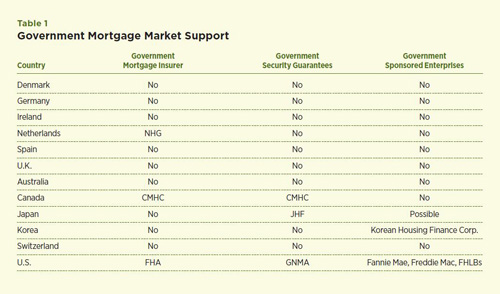by Sarah Jawaid, National Housing Conference
On October 13, Congressman Gary Miller (R-CA) presented his and Carolyn McCarthy’s bill (D-NY), Secondary Market Facility for Residential Mortgages Act of 2011, in front of the subcommittee on International Monetary Policy and Trade. As chairman of this subcommittee, he set the stage by discussing how the bill outlines the future of GSEs, most notably, combining Fannie Mae and Freddie Mac into one credit facility in hopes of stabilizing the housing mortgage finance system and creating room for private capital investment. Witnesses testifying:
- Michael A. J. Farrell, Chairman, CEO and President, Annaly Capital Management, Inc.
- Mr. Richard Dorfman, Managing Director and Head of Securitization Group, Securities Industry and Financial Markets Association
- Mr. Moe Veissi, 2011 President-Elect, National Association of Realtors
- Dr. Susan M. Wachter, Richard B. Worley Professor of Financial Management, The Wharton School, University of Pennsylvania
The committee asked witnesses to share international examples of other developed countries’ mortgage systems that the U.S. could learn from as well as the future of global capital sources for funding. Farrell said the heightened interest in international comparisons comes from the “argument that other countries have similar homeownership rates and manageable mortgage costs.”
Witnesses agreed that the U.S. mortgage system differs from its peers because of its use of securitization as opposed to holding mortgages on the banks’ books. Fixed-rate mortgages require securitization to keep the market liquid and replace demand-deposit-based bank portfolios. Wachter said it is also hard to compare international mortgage markets in developed countries because each country has a differing set of rental options. In countries with fewer rental options, homeownership is higher.
Wachter went on to cite a study commissioned by the Mortgage Bankers Association and the Research Institute for Housing in America which looked at the mortgage markets of 12 different countries. The study found that countries “differ in terms of the market share of adjustable- versus fixed-rate mortgages, the use of pre-payment penalties, maximum term and the offering of features such as interest-only payments and assumability.” The chart below (taken from the study) shows how unusual the U.S. mortgage market is in comparison to other developed countries. If the U.S. mortgage market shifts away from not including “the homogeneity and liquidity made possible by government involvement” then it “will be smaller and more expensive, with potentially negative consequences for home prices and homeowner flexibility,” said Farrell. Dorfman shared similar sentiments by saying, “the global financial markets have been a critical component sustaining the financing of housing in America, and we must ensure this continues in the future.”
All the witnesses agreed with a point summarized by Rep. Garrett that a top priority should be rebuilding confidence in the U.S. mortgage system through transparency in the underwriting process, in the securitization process. Rep. Garrett also asked the panel if there should be fair-value accounting for GSEs which include clearly articulating debt and liabilities to attract private capital; all panelists agreed in the affirmative except for Wachter, who demurred for further study. Miller wrapped up the hearing with the central point: “this economy will not turn until we address the housing market.” Read NHC blog post on the Secondary Market Facility for Residential Mortgages Act of 2011 bill here.


